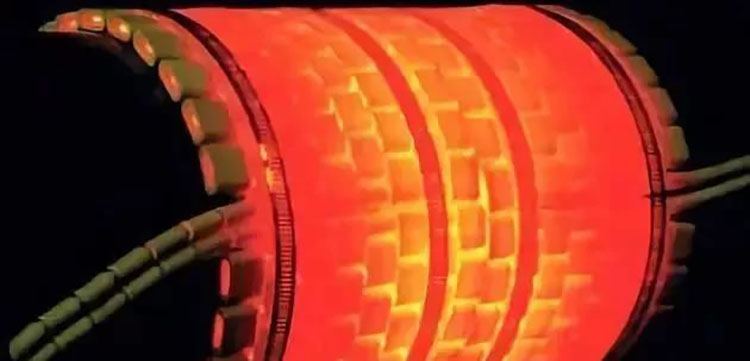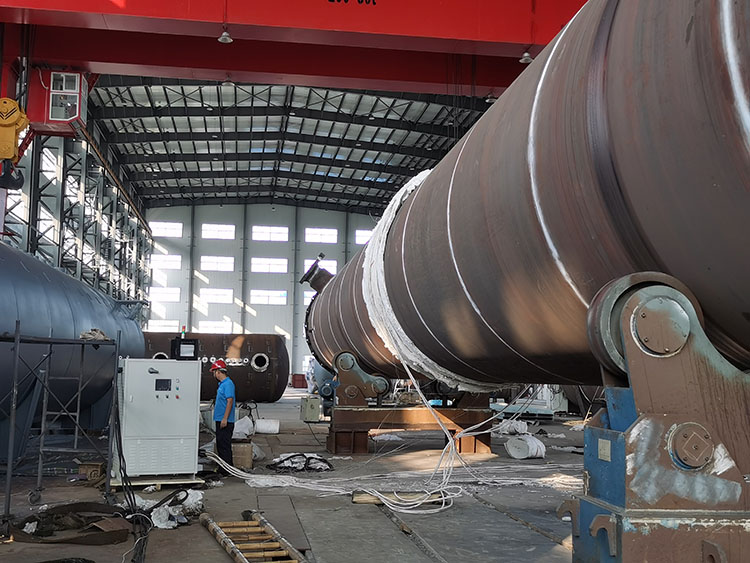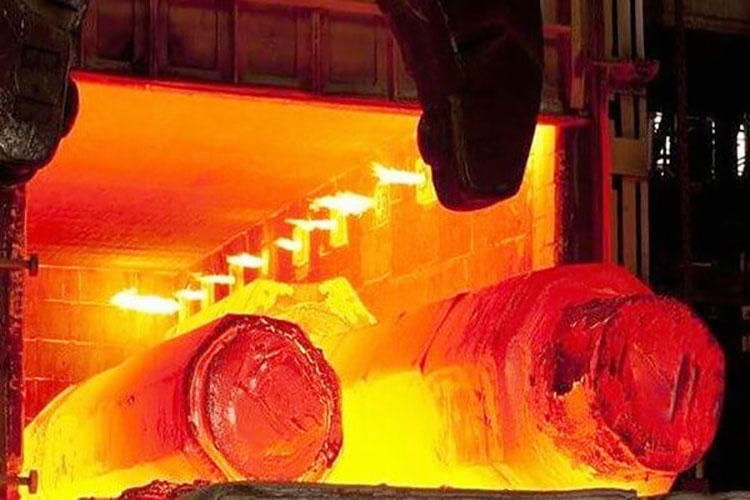The welding residual stress is caused by the uneven temperature distribution of the weldment caused by welding, the thermal expansion and contraction of the weld metal, etc., so the welding construction will inevitably produce residual stress.
The most common method to eliminate residual stress is high-temperature tempering, that is, heating the weldment to a certain temperature and holding it for a certain period of time in a heat treatment furnace, and using the reduction of the yield limit of the material at high temperature to cause plastic flow in places with high internal stress. The elastic deformation gradually decreases, and the plastic deformation gradually increases to reduce the stress.
1.Choice of heat treatment method
The effect of post-weld heat treatment on the tensile strength and creep limit of metal is related to the heat treatment temperature and holding time. The effect of post-weld heat treatment on the impact toughness of weld metal varies with different steel types.
Post-weld heat treatment generally adopts single high-temperature tempering or normalizing plus high-temperature tempering. For gas welding joints, normalizing and high temperature tempering are adopted. This is because the grains of the gas welding seam and the heat-affected zone are coarse, and the grains need to be refined, so normalizing treatment is adopted.
However, single normalizing cannot eliminate residual stress, so high temperature tempering is required to eliminate stress. A single medium-temperature tempering is only suitable for the assembly and welding of large ordinary low-carbon steel containers assembled on site, and its purpose is to achieve partial elimination of residual stress and dehydrogenation.
In most cases, a single high temperature tempering is used. The heating and cooling of the heat treatment should not be too fast, and the inner and outer walls should be uniform.
2.Heat treatment methods used in pressure vessels
There are two types of heat treatment methods for pressure vessels: one is heat treatment to improve mechanical properties; the other is post-weld heat treatment (PWHT). Broadly speaking, post-weld heat treatment is the heat treatment of the welded area or welded components after the workpiece is welded.
The specific content includes stress relief annealing, complete annealing, solid solution, normalizing, normalizing plus tempering, tempering, low temperature stress relief, precipitation heat treatment, etc.
In a narrow sense, post-weld heat treatment only refers to stress relief annealing, that is, in order to improve the performance of the welding zone and eliminate harmful effects such as welding residual stress, so as to uniformly and fully heat the welding zone and related parts below the metal phase transition 2 temperature point , and then the process of uniform cooling. In many cases the postweld heat treatment discussed is essentially postweld stress relief heat treatment.
3.Purpose of post weld heat treatment
(1). Relax welding residual stress.
(2). Stabilize the shape and size of the structure and reduce distortion.
(3). Improve the performance of the base metal and welded joints, including:
a. Improve the plasticity of the weld metal.
b. Reduce the hardness of the heat-affected zone.
c. Improve fracture toughness.
d. Improve fatigue strength.
e. Restore or increase the yield strength reduced in cold forming.
(4). Improve the ability to resist stress corrosion.
(5).Further release harmful gases in the weld metal, especially hydrogen, to prevent the occurrence of delayed cracks.
4.Judgment of the necessity of PWHT
Whether the post-weld heat treatment is necessary for the pressure vessel should be clearly specified in the design, which is required by the current pressure vessel design code.
For welded pressure vessels, there is a large residual stress in the welding zone, and the adverse effects of residual stress. Only manifested under certain conditions. When the residual stress combines with the hydrogen in the weld, it will promote the hardening of the heat-affected zone, resulting in the generation of cold cracks and delayed cracks.
When the static stress remaining in the weld or the dynamic load stress in the load operation is combined with the corrosive action of the medium, it may cause crack corrosion, which is the so-called stress corrosion. Welding residual stress and base metal hardening caused by welding are important factors for stress corrosion cracking.
The research results show that the main effect of deformation and residual stress on metal materials is to make the metal change from uniform corrosion to local corrosion, that is, to intergranular or transgranular corrosion. Of course, both corrosion cracking and intergranular corrosion of metals occur in media that have certain characteristics for that metal.
In the presence of residual stress, it is different according to the composition, concentration and temperature of the corrosive medium, as well as the differences in the composition, structure, surface state, stress state, etc. of the base metal and the welding zone, so that corrosion The nature of the damage may change.
5.Consideration of the comprehensive effect of PWHT
Post-weld heat treatment is not absolutely beneficial. In general, post-weld heat treatment is beneficial for relieving residual stress, and it is only carried out when there are strict requirements for stress corrosion. However, the impact toughness test of the specimen shows that post-weld heat treatment is not good for the toughness of the deposited metal and the weld heat-affected zone, and sometimes intergranular cracking may occur within the grain coarsening range of the weld heat-affected zone.
Furthermore, PWHT relies on the reduction of material strength at high temperature to achieve stress relief. Therefore, during PWHT, the structure may lose rigidity. For structures that adopt overall or partial PWHT, the weldment at high temperature must be considered before heat treatment. supporting capacity.
Therefore, when considering whether to carry out post-weld heat treatment, the advantages and disadvantages of heat treatment should be comprehensively compared. From the point of view of structural performance, there is one side to improve performance, and the other side to reduce performance. A reasonable judgment should be made on the basis of comprehensive consideration of the two aspects.
Post time: Jun-20-2023



